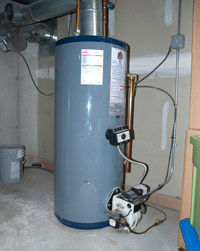Ensuring Longevity of Your Home's Hot Water System: Maintenance TipsSpecialist Advice for Maintaining Your Home's Hot Water System
Call TodayWhat are your thoughts and feelings on What Kind of Maintenance Do Water Heaters Need??

Hot water is important for daily convenience, whether it's for a rejuvenating shower or washing meals. To ensure your hot water system runs successfully and lasts longer, routine maintenance is crucial. This article gives useful tips and insights on just how to maintain your home's warm water system to prevent disruptions and costly repair work.
Intro
Maintaining your home's warm water system may appear difficult, but with a couple of easy actions, you can ensure it runs smoothly for several years to come. This overview covers everything from comprehending your warm water system to DIY upkeep ideas and knowing when to employ expert aid.
Value of Maintaining Your Hot Water System
Normal maintenance not just extends the lifespan of your warm water system yet also guarantees it operates successfully. Overlooking upkeep can result in lowered efficiency, greater energy expenses, and also premature failing of the system.
Signs Your Hot Water System Requirements Upkeep
Understanding when your hot water system requires attention can protect against major problems. Keep an eye out for indications such as irregular water temperature level, unusual noises from the heating system, or corroded water.
Understanding Your Warm Water System
Before diving into upkeep tasks, it's valuable to recognize the basic elements of your warm water system. Generally, this consists of the hot water heater itself, pipes, anode rods, and temperature level controls.
Regular Monthly Upkeep Tasks
Regular regular monthly checks can aid capture small issues before they intensify.
Purging the Water Heater
Flushing your hot water heater gets rid of sediment buildup, enhancing performance and extending its life.
Monitoring and Replacing Anode Rods
Anode poles protect against corrosion inside the storage tank. Inspecting and replacing them when worn out is important.
Evaluating and Readjusting Temperature Settings
Changing the temperature level setups makes certain optimal performance and safety.
DIY Tips for Upkeep
You can do numerous upkeep jobs on your own to maintain your warm water system in leading problem.
Looking for Leakages
Routinely inspect pipes and connections for leaks, as these can result in water damage and higher costs.
Examining Pressure Relief Valves
Testing the stress safety valve guarantees it works appropriately and stops too much stress build-up.
Shielding Pipelines
Protecting warm water pipes reduces heat loss and can save power.
When to Call an Expert
While DIY maintenance is useful, some problems need professional knowledge.
Complex Issues Requiring Specialist Assistance
Examples include major leaks, electrical problems, or if your water heater is consistently underperforming.
Routine Expert Maintenance Benefits
Specialist upkeep can include complete examinations, tune-ups, and making sure conformity with security requirements.
Conclusion
Normal upkeep of your home's hot water system is essential for performance, long life, and price savings. By following these tips and understanding when to seek specialist aid, you can make sure a reliable supply of warm water without unforeseen disruptions.
How to Maintain an Instant Hot Water Heater
Before tinkering with your hot water heater, make sure that it’s not powered on. You also have to turn off the main circuit breaker and shut off the main gas line to prevent accidents. Also turn off the water valves connected to your unit to prevent water from flowing into and out of the appliance. 2. When you’re done, you have to detach the purge valves’ caps. These look like the letter “T” and are situated on either side of the water valves. Doing so will release any pressure that has accumulated inside the valves while at the same time avoid hot water from shooting out and burning your skin. 3. When the purge valves’ caps are removed, you have to connect your hosing lines to the valves. Your unit should have come with three hoses but if it didn’t, you can purchase these things from any hardware or home repair shops. You can also get them from retail stores that sell water heating systems. Read the user’s manual and follow it to complete this task properly. When the hosing lines are connected, open the purge port’s valves. 4. You should never use harsh chemical cleaners or solutions when cleaning your unit. Make use of white vinegar instead. It should be undiluted and you’ll probably use about 2 gallons. 5. Now flush your water heater. This task should probably take about 40 minutes. We can’t give you specific directions for this because the procedure is carried out depending on the type, model and brand of your heater. With that being said, refer to the user’s manual. 6. When you’re done draining the unit, you have to turn off the purge port valves again. Remove the hosing lines that you earlier installed on each of the water valves. Put the valve caps (purge port) back in their respective places and be very careful so as not to damage the rubber discs that are found inside these caps. 7. Now that everything’s back in place, check your user’s manual again to find out how to reactivate your water heating system. 8. Once it is working, turn one of your hot water faucets on just to let air pass through the heater’s water supply pipes. Leave the tap on until water flows smoothly out of it. https://www.orrplumbing.com/blog/2014/september/how-to-maintain-an-instant-hot-water-heater/

We had been made aware of that report about What Kind of Maintenance Do Water Heaters Need? from someone on a different site. Are you aware of anybody else who is excited by the topic? Take a moment to promote it. Kudos for your time. Please visit our blog back soon.
Call Today